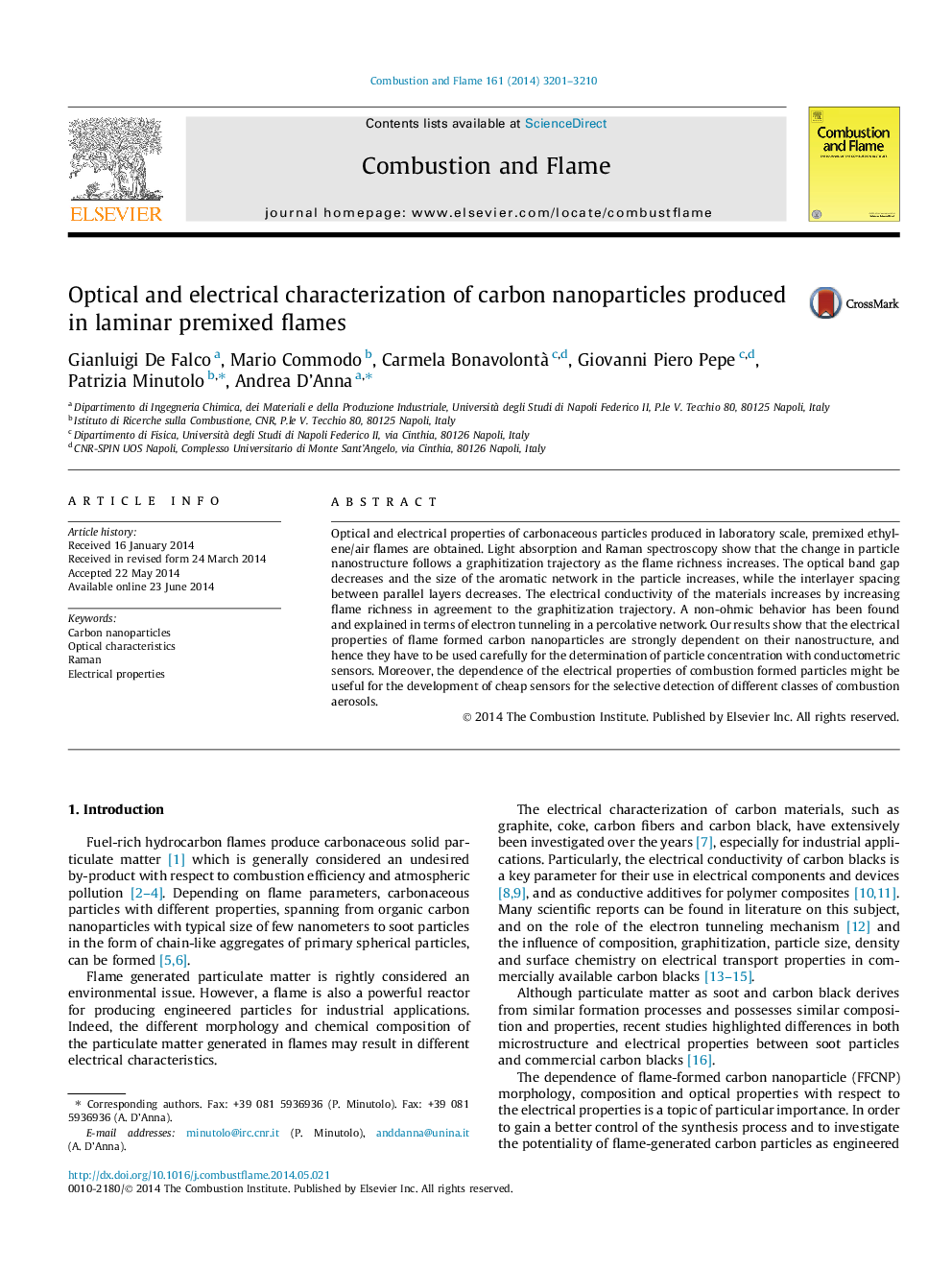| Article ID | Journal | Published Year | Pages | File Type |
|---|---|---|---|---|
| 10264393 | Combustion and Flame | 2014 | 10 Pages |
Abstract
Optical and electrical properties of carbonaceous particles produced in laboratory scale, premixed ethylene/air flames are obtained. Light absorption and Raman spectroscopy show that the change in particle nanostructure follows a graphitization trajectory as the flame richness increases. The optical band gap decreases and the size of the aromatic network in the particle increases, while the interlayer spacing between parallel layers decreases. The electrical conductivity of the materials increases by increasing flame richness in agreement to the graphitization trajectory. A non-ohmic behavior has been found and explained in terms of electron tunneling in a percolative network. Our results show that the electrical properties of flame formed carbon nanoparticles are strongly dependent on their nanostructure, and hence they have to be used carefully for the determination of particle concentration with conductometric sensors. Moreover, the dependence of the electrical properties of combustion formed particles might be useful for the development of cheap sensors for the selective detection of different classes of combustion aerosols.
Related Topics
Physical Sciences and Engineering
Chemical Engineering
Chemical Engineering (General)
Authors
Gianluigi De Falco, Mario Commodo, Carmela Bonavolontà , Giovanni Piero Pepe, Patrizia Minutolo, Andrea D'Anna,
